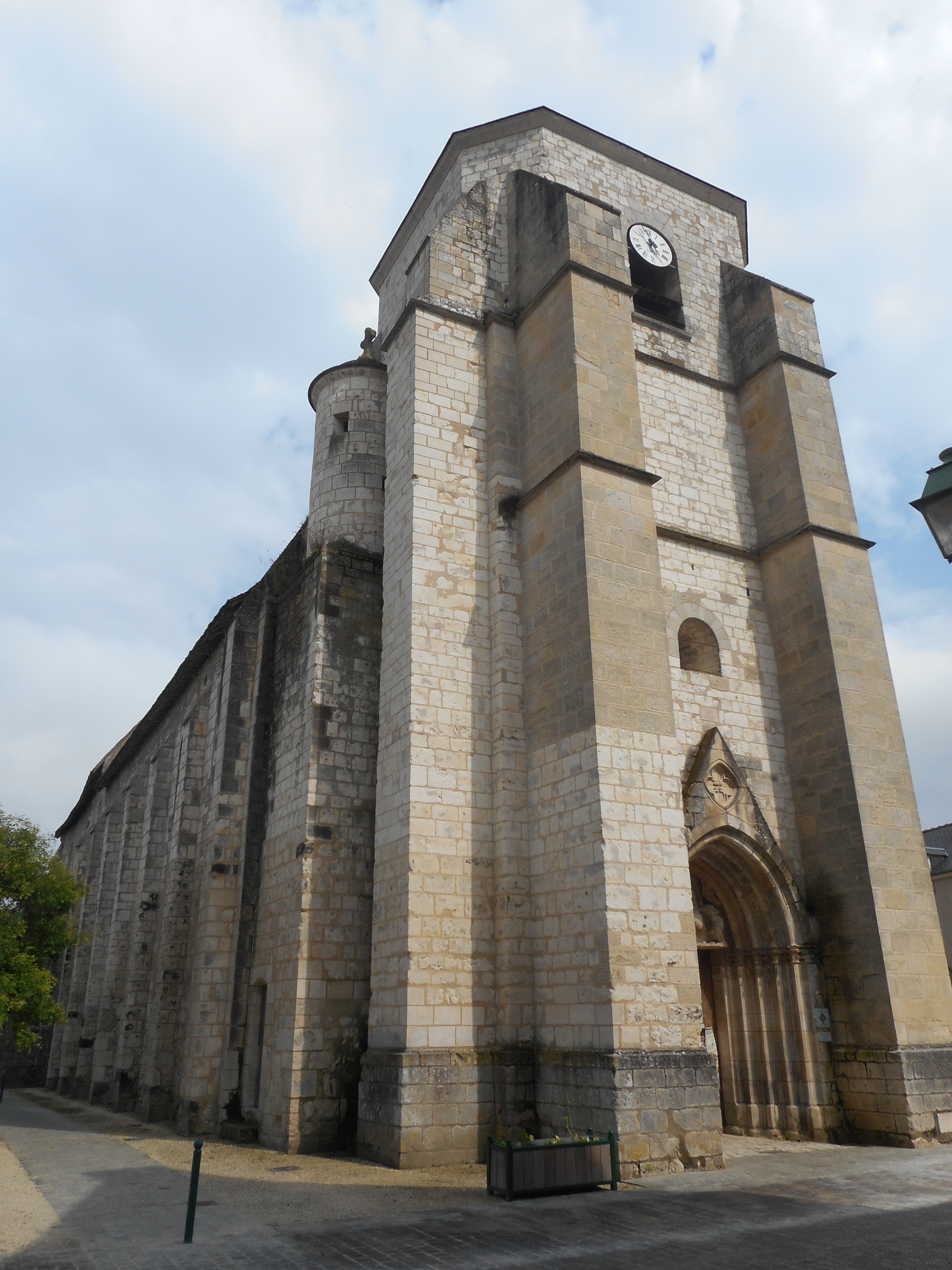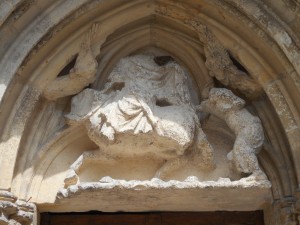Grégoire de Tours rapporte qu’Ollon, premier comte de Bourges, frappé d’une vision, renonce à piller les chanoines de Léré à la fin du VIe siècle.
La fondation de la collégiale Saint-Martin semble dater du VIIIe siècle mais la majeure partie de l’église actuelle date du XIe siècle, avec la nef romane et la crypte voûtée qui est ornée de peintures murales du XIIIe siècle. Le chœur de l’église a été détruit au XIVe siècle par les Anglais durant les guerres de Cent ans. L’autel de style baroque date du XVIe siècle.
Les moines de Saint-Martin de Tours y ont caché deux fois le corps de saint Martin lors des invasion normandes. Un oratoire du IXe siècle se trouve à l’arrière de la crypte et aurait été fondé pour y abriter le corps. Une petite statuette de saint Martin y a été placée dans les années 1990 pour rappeler l’événement.
L’église abrite une relique de saint Martin dans un reliquaire en bois réalisé par un prêtre au début du XXe siècle. Elle possède une charité de saint Martin sur le tympan du portail ouest et un vitrail figurant saint Martin en évêque dans le chœur. Très mutilée durant les guerres de Religion, il manque les pattes du cheval et les têtes des personnages.
La porte ouest ainsi que la crypte sont classées aux Monuments Historiques par arrêté du 2 mars 1912. Le reste de la collégiale est quant à lui inscrit aux Monuments Historiques par un arrêté du 2 mars 1926 : PA00096824




Gregory of Tours reports that Ollon, the first Count of Bourges, was struck by a vision and gave up plundering the canons of Léré at the end of the 6th century.
The foundation of the collegiate church of Saint-Martin seems to date from the 8th century, but most of the present church dates from the 11th century, with the Romanesque nave and the vaulted crypt, which is decorated with 13th-century wall paintings. The choir of the church was destroyed in the 14th century by the English during the Hundred Years’ War. The baroque altar dates from the 16th century.
The monks of St. Martin of Tours hid the body of St. Martin here twice during the Norman invasion. An oratory dating from the 9th century is located at the back of the crypt and is said to have been founded to house the body. A small statuette of St. Martin was placed there in the 1990s to commemorate the event.
The church houses a relic of St Martin in a wooden reliquary made by a priest in the early 20th century. It has a charity of St Martin on the tympanum of the west portal and a stained glass window depicting St Martin as a bishop in the choir. It was badly damaged during the Wars of Religion, and the horse’s legs and the heads of the figures are missing.
The west door and the crypt are listed as Historic Monuments by a decree of 2 March 1912. The rest of the collegiate church is listed as a Historic Monument by a decree of 2 March 1926: PA00096824

 "/>
"/>
